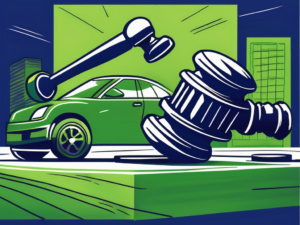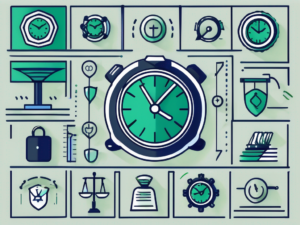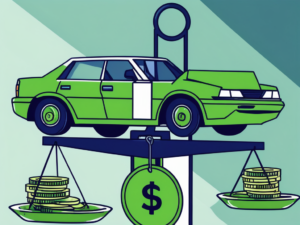Talk to Sales: (401) 200-6026

In the highly competitive automotive industry, dealerships constantly strive to achieve outstanding performance. Whether it’s closing more sales, delivering exceptional customer service, or optimizing operational efficiency, there are always areas that can be improved upon. This article will explore five key areas of dealership performance that can benefit from continuous enhancement.
Understanding Dealership Performance
Before delving into specific areas of improvement, it’s important to understand the significance of dealership performance as a whole. Successful dealerships are not stagnant entities; they are constantly evolving and looking for ways to refine their processes. Continuous improvement is vital for remaining competitive and staying ahead of the game.
Dealership performance is not just about numbers and sales figures; it encompasses the entire customer experience journey. From the moment a potential buyer steps onto the lot to the after-sales service they receive, every interaction shapes the dealership’s reputation. Building a positive brand image and fostering customer loyalty are key components of dealership performance.
The Importance of Continuous Improvement
Continuous improvement is crucial for dealerships to remain relevant in a rapidly changing market. By constantly assessing and enhancing various aspects of their operations, dealerships can adapt to new customer expectations, market trends, and industry challenges. It allows them to stay one step ahead of competitors and deliver exceptional results.
Moreover, continuous improvement fosters a culture of innovation within the dealership. Employees are encouraged to think creatively, suggest new ideas, and implement best practices. This culture not only boosts morale and engagement but also leads to long-term success and sustainability.
Key Performance Indicators in Dealership
When it comes to measuring dealership performance, key performance indicators (KPIs) play a crucial role. These metrics provide valuable insights into the dealership’s overall effectiveness and highlight areas that need improvement. Common KPIs in the automotive industry include sales conversion rates, customer satisfaction scores, and inventory turnover ratios.
However, KPIs should not be viewed in isolation. They are interconnected and influence each other. For example, a high sales conversion rate may indicate effective sales strategies, but if customer satisfaction scores are low, it could point to issues in the post-sales service. Dealerships need to analyze KPIs holistically to drive comprehensive improvements across all aspects of their operations.
Sell cars on the lot faster with AutoRaptor
Know if we’re the right fit within 10 minutes
Enhancing Sales Performance
Sales performance is a fundamental aspect of any dealership’s success. By improving sales techniques and adopting effective customer relationship management strategies, dealerships can boost their bottom line and establish long-lasting relationships with customers.
One key aspect of enhancing sales performance is the continuous training and development of sales professionals. Providing ongoing education on product knowledge, sales strategies, and customer psychology can empower sales teams to better understand and meet the needs of their clients. By investing in the growth and skill development of sales staff, dealerships can ensure a higher level of customer satisfaction and increase sales revenue over time.
Strategies for Improving Sales Techniques
Successful sales techniques involve understanding the customer’s needs, building trust, and delivering value. Sales professionals should focus on active listening, asking open-ended questions, and identifying opportunities to upsell or cross-sell additional products and services.
Moreover, incorporating technology into sales processes can also significantly enhance sales performance. Utilizing customer relationship management (CRM) software, sales automation tools, and data analytics can streamline sales operations, provide valuable insights into customer behavior, and improve overall sales efficiency. By embracing technology as a sales enabler, dealerships can stay ahead of the competition and adapt to the evolving needs of modern consumers.
The Role of Customer Relationship Management
Customer relationship management (CRM) systems are essential tools for managing customer interactions and maximizing sales opportunities. CRM platforms allow dealerships to track leads, nurture customer relationships, and personalize sales efforts. By leveraging CRM capabilities effectively, dealerships can enhance sales performance and build customer loyalty.
Furthermore, establishing a strong online presence and engaging with customers through various digital channels can also play a crucial role in improving sales performance. Through social media platforms, email marketing campaigns, and personalized online promotions, dealerships can reach a wider audience, create brand awareness, and drive more sales. By embracing digital marketing strategies, dealerships can adapt to the changing landscape of consumer behavior and capitalize on new opportunities for growth.
Optimizing Inventory Management
Efficient inventory management is critical for reducing costs, improving cash flow, and enhancing customer satisfaction. By implementing effective inventory control techniques and streamlining processes, dealerships can achieve greater profitability and meet customer demands more effectively.
One key aspect of optimizing inventory management is understanding the importance of inventory turnover. Inventory turnover measures how quickly a dealership sells its inventory and replaces it with new stock. A high turnover rate indicates that products are selling quickly, reducing the risk of obsolescence and maximizing cash flow. Dealerships can calculate their inventory turnover ratio by dividing the cost of goods sold by the average inventory value.
The Impact of Efficient Inventory Control
Efficient inventory control ensures that dealerships have the right products in stock at the right time. It reduces the risk of stockouts or overstocking, both of which can lead to financial losses. Effective inventory management allows dealerships to deliver a seamless customer experience and maintain a competitive edge.
Moreover, efficient inventory control can also positively impact supplier relationships. By accurately forecasting demand and maintaining optimal stock levels, dealerships can build stronger partnerships with suppliers. This can lead to better pricing, timely deliveries, and access to new products, ultimately enhancing the overall efficiency of the supply chain.
Techniques for Effective Inventory Management
Implementing inventory management best practices can help dealerships maximize profitability and minimize operational inefficiencies. These practices include forecasting demand, optimizing stock levels, adopting just-in-time inventory methods, and leveraging technology to automate inventory tracking and replenishment processes.
Another technique that can significantly improve inventory management is the implementation of ABC analysis. This method categorizes inventory based on its value and contribution to sales. Dealerships can then prioritize their focus on high-value items (A items) that have a significant impact on revenue, ensuring that they are always well-stocked and readily available to customers.
Boosting Customer Service
Excellent customer service is a hallmark of successful dealerships. Satisfied customers not only become loyal, repeat buyers but also act as brand advocates, recommending the dealership to friends and family. Therefore, continuously improving customer service is essential for long-term success and growth.
The Value of Excellent Customer Service
Delivering exceptional customer service builds trust, fosters positive customer experiences, and differentiates dealerships from their competitors. In a highly competitive industry, excellent customer service can be the deciding factor in a customer’s choice to purchase a vehicle or seek services elsewhere.
Tips for Delivering Superior Customer Experience
Superior customer experiences can be achieved by training staff to prioritize customer satisfaction, effectively resolving customer issues, and going the extra mile. Providing prompt responses, personalized recommendations, and proactive communication can significantly enhance the overall customer experience and reinforce customer loyalty.
Sell cars on the lot faster with AutoRaptor
Know if we’re the right fit within 10 minutes
Streamlining Operations
The smoother the dealership’s operations, the more efficiently it can serve customers and maximize profitability. By identifying bottlenecks, eliminating unnecessary steps, and implementing streamlined processes, dealerships can optimize their operations for greater efficiency.
The Significance of Smooth Operations
Smooth operations enable dealerships to reduce costs, minimize errors, and ensure timely delivery of products and services. They also contribute to better employee morale and job satisfaction, resulting in happier and more productive staff members.
Ways to Improve Operational Efficiency
Improving operational efficiency can be achieved by implementing lean principles, embracing technology solutions, and fostering a culture of continuous improvement. By eliminating waste, automating repetitive tasks, and empowering employees to contribute ideas for streamlining processes, dealerships can achieve smoother operations and maximize productivity.
In conclusion, while dealerships may already be performing well, there are always areas that can be improved upon. By understanding the importance of continuous improvement, focusing on key performance indicators, enhancing sales techniques, optimizing inventory management, boosting customer service, and streamlining operations, dealerships can achieve exceptional results and stay ahead in the competitive automotive industry.
Take Your Dealership Performance to the Next Level with AutoRaptor
Ready to elevate your dealership’s sales, customer service, and operational efficiency? AutoRaptor’s CRM is designed to streamline your processes and boost your team’s productivity. By saving an average of $10.8k per dealership annually, AutoRaptor not only optimizes your performance but also enhances your bottom line. Don’t miss the opportunity to see how our CRM can be tailored to your unique needs. Book a quick demo today and discover the difference within just 10 minutes. Transform your dealership’s potential into reality with AutoRaptor.
Subscribe to our Newsletter
Resources to help your dealership convert more leads into sales, retain more customers, and market inventory smarter, straight to your inbox every Sunday.




